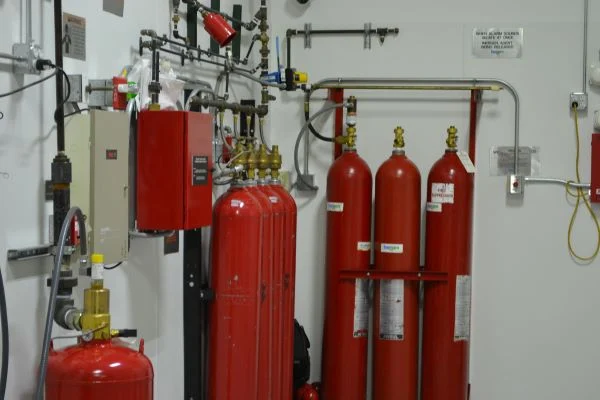Think about how quickly a fire can get out of hand. A spark in a kitchen, a dodgy socket in an office, even something silly like paper too close to a heater, it doesn’t take long before it’s more than anyone with a fire extinguisher can manage. By the time someone’s noticed, called for help, and grabbed the right tool, the flames may already have taken over.
That’s where suppression systems come in. They don’t wait. They sense the change, smoke, heat, flame and kick into action on their own. A blast of water mist, a release of gas, sometimes foam depending on the risk, and suddenly the fire doesn’t have a chance to spread. That quick response gives people time to escape, keeps damage contained, and in many cases, prevents a complete disaster.
It’s About People First
Buildings can be fixed. Computers can be replaced. A person’s life can’t.
When a fire breaks out, not everyone reacts calmly. Some freeze. Some panic. Some don’t even know where the nearest extinguisher is. A suppression system doesn’t care about panic or training—it just does its job. It cuts the flames down, slows the smoke, and gives everyone extra minutes to get outside. And honestly, those minutes matter more than anything else.
The Stuff You Can’t Afford to Lose
Most places don’t just hold people—they hold things that matter. Data centres with rows of servers. Warehouses full of stock. Museums with irreplaceable objects. Even a small office probably has equipment and files that would take months to rebuild or recover.
Water might save a building but destroy what’s inside, which is why there are different types of suppression. Clean agent gases are popular in tech-heavy spaces because they don’t leave residue. Foam is used where there’s fuel. Sprinklers or mist work well in general spaces. The point is, the right system saves not just the shell of a building but the things that make it valuable.
The Business Side Nobody Talks About
Here’s something many owners don’t consider: the real cost isn’t just the fire itself—it’s the downtime. Imagine a café shut for three months. A logistics hub offline for even a week. Customers don’t wait around; they go elsewhere. Some businesses never open their doors again after a big fire, even if insurance covers repairs.
A suppression system that knocks flames down fast means less downtime. Repairs are smaller, operations restart sooner, and the business survives. It’s not dramatic, it’s practical.
Compliance, Insurance, and Reputation
There’s also the boring but important part: rules. Depending on where you are, some buildings are legally required to have fire suppression in place. Skip that and you could face fines, higher insurance premiums, or even liability if something happens.
And think about reputation. Employees notice whether their workplace feels safe. Customers do too. A visible commitment to safety builds trust, even if nobody ever mentions it out loud.
Cutting Corners Isn’t Worth It
Yes, installation costs money. Maintenance costs money too. But so does losing a building. So does legal action. So does downtime. Insurance might soften the blow, but it doesn’t restore lost trust or bring back irreplaceable items.
I’ve heard people call suppression systems an “expense.” They’re not. They’re protection. They’re peace of mind. They’re the difference between telling a story about how a system saved the day—or standing in front of the ruins of everything you’ve worked for.
Final Thought
Fire is unpredictable. That’s just a fact. But your preparation doesn’t have to be. A fire suppression system reacts faster than people ever could, protects what matters most, and gives everyone a fighting chance.
If you own a building, run a business, or are responsible for people’s safety, don’t look at suppression as a tick-box exercise. Look at it as the safety net you hope you’ll never need, but one day might be very glad you had.

